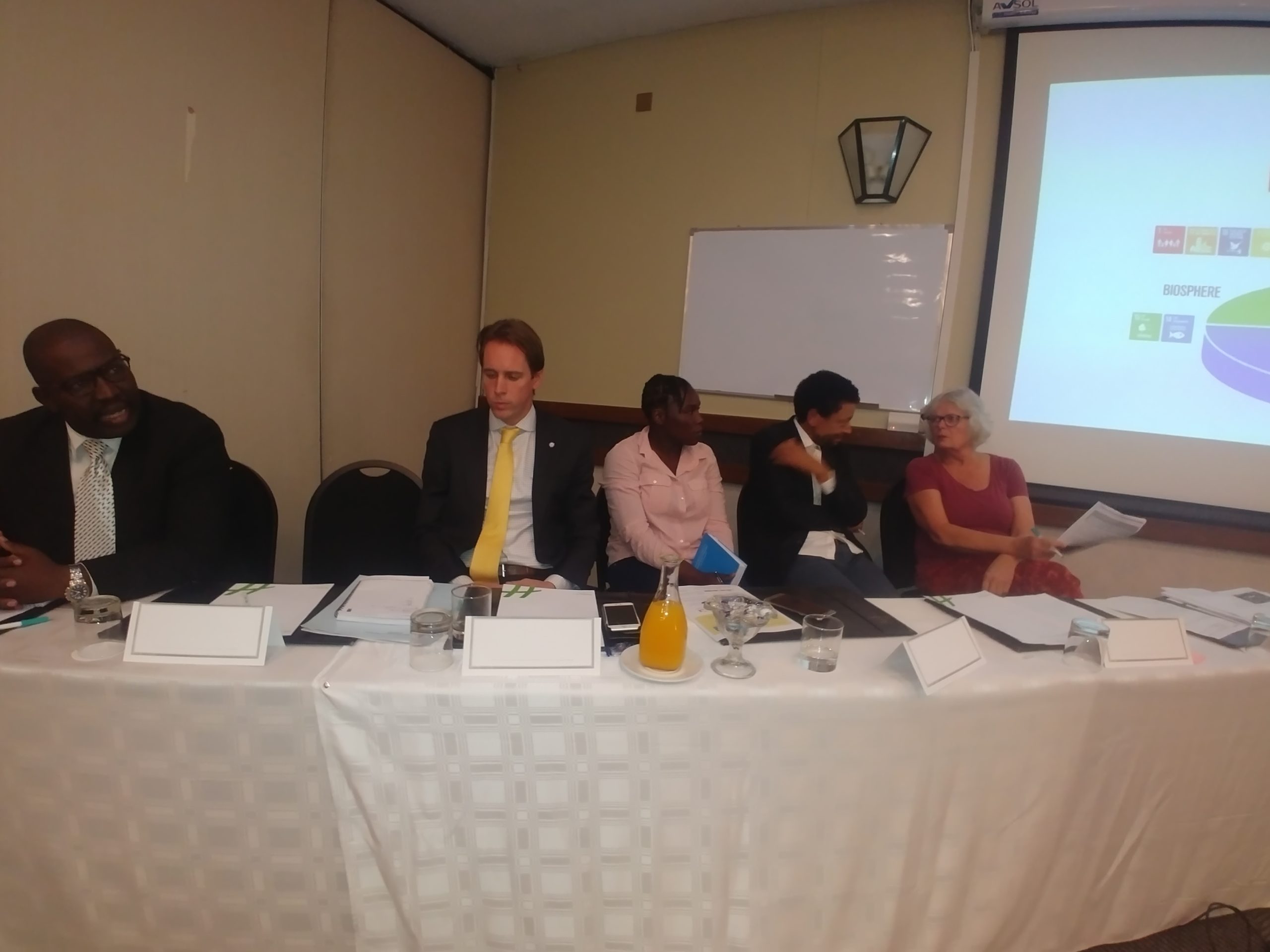By Tatenda Mujeyi and Byron Mutingwende
The decline in biodiversity initiated by malpractices in administering natural resources and ecosystem management is hampering the realisation of maximum potential tourism returns.
The remarks were echoed by most speakers at the belated World Biodiversity Day commemorations hosted by the United Nations Development Programme (UNDP) in Harare last Thursday.
According to the UNDP, there is a massive decrease of biodiversity, justified by a 47% decline in natural ecosystems, a 25% species extinction risk and a huge 82% decrease on biomass and species abundance.
This decline in biodiversity is a cause of concern to the tourism industry because it has resulted in less flora and fauna as usually anticipated by tourists.
“Biodiversity pilferages negatively affect tourism destinations as the destinations are left with little attractions for the tourists and in turn they might opt not to visit destinations which are experiencing population decline and extinction of tourist attractions,” Mr Edward Samuriwo, the Director Environment and Natural Resources in the ministry of Environment, Tourism and Hospitality Industry said at the event.
Revenue inflows from ivory, elephant skin, game where argued as declining owing to the effects of poaching.
“There is a steady increase in poaching and this has negative effects on the generation of the much needed foreign currency as it is lost through such unnecessary pilferages,” Mr Samuriwo said.
Biodiversity decline was also noted as having potential to affect the geographic composition of tourism destinations and rendering them less attractive.
“Zimbabwe is still rich in biodiversity and it is critical to ensure that this biodiversity is maintained. While we have achieved a lot for social and economic development, we need to recognise that prosperity has also come at the expense of the environment.” – Georges van Montfort, UNDP Zimbabwe’s Resident Representative.
On why biodiversity is being taken topical now than before, Mr Montfort added: “No one talked about biodiversity – before it started disappearing. We just assumed that nature – the food we eat, the water we drink and the air we breathe – would always be here for us. The recent United Nations IPBES 2019 Global Assessment report on Biodiversity and Ecosystem Services tells us that this is not the case. While the world has made gigantic strides in terms of human development over the past decades, increasing prosperity has also come at a cost. The IPBES Global Assessment has documented land degradation, forest loss, pollution, plastics, climate change and biodiversity loss. According to the report we are eroding nature faster than it can replenish itself and plant and animal species extinction is accelerating. We are essentially wrecking the planet we call home.”
The effects of Biodiversity were viewed as hampering Tourism as they had seen a decrease in the nature of indigenous people and local conservation strategies by over 72%..
“Urbanisation has been a great effect on biodiversity and in turn tourism as we have sought the sprawling Western and Eastern style of development at the expense of local cultures that should be preserved as a central tourist attraction. The western nation’s are no longer attracted by the tall buildings and urban set up, it is the local conservationist approaches they are interested in.” the GEF6 project Manager also said.
Urge was made to see to the conservation of biodiversity so as to enhance tourism and in turn foreign currency generation as facilitated by tourism.
The celebrations marked the commemorations of the World Biodiversity Day, which is usually celebrated on 22 May and were this year themed “our Biodiversity, our food, our health”.
At present, there is an IPBES Global Assessment Report on Biodiversity and Ecosystem Services which offers an integrated overview of where the world stands in relation to key international goals, including the Sustainable Development Goals (SDGs), the Aichi Biodiversity Targets and the Paris Agreement on climate change. It examines causes of biodiversity and ecosystem change, the implications for people, policy options and likely future pathways over the next three decades if current trends continue, and other scenarios.
“The loss of species, ecosystems and genetic diversity is already a global and generational threat to human well-being. Protecting the invaluable contributions of nature to people will be the defining challenge of decades to come. Policies, efforts and actions – at every level – will only succeed, however, when based on the best knowledge and evidence. This is what the IPBES Global Assessment provides,” said Sir Robert Watson, IPBES Chair.
Building upon earlier IPBES assessment reports, especially the recently-released Land Degradation and Restoration Assessment and the Regional Assessment Reports for Africa, the Americas, Asia-Pacific and Europe and Central Asia (March, 2018), the Global Assessment:
• Covers all land-based ecosystems (except Antarctica), inland water and the open oceans
• Evaluates changes over the past 50 years — and implications for our economies, livelihoods, food security and quality of life
• Explores impacts of trade and other global processes on biodiversity and ecosystem services
• Ranks the relative impacts of climate change, invasive species, pollution, sea and land use change and a range of other challenges to nature
• Identifies priority gaps in our available knowledge that will need to be filled
• Projects what biodiversity could look like in decades ahead under six future scenarios: Economic Optimism; Regional Competition; Global Sustainability; Business as Usual; Regional Sustainability and Reformed Markets
• Assesses policy, technology, governance, behaviour changes, options and pathways to reach global goals by looking at synergies and trade-offs between food production, water security, energy and infrastructure expansion, climate change mitigation, nature conservation and economic development
